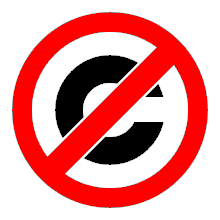BC-isit442 Class Overview And Structure
Version 0.1
January 05, 2016
http://mohsen.banan.1.byname.net/PLPC/120048
Contents
- Part I Messaging Medium
- Part II History Of Messaging/Email
- Part III Messaging Model And Terminology
- Part IV Messaging Protocols
- Part V Class Activities
- Part VI Assignments
Part I |
<presentation>
[plain] Part 1: Introductions
Contents
- Part I Messaging Medium
- Part II History Of Messaging/Email
- Part III Messaging Model And Terminology
- Part IV Messaging Protocols
- Part V Class Activities
- Part VI Assignments
[part=1]
1 What Is Messaging?
What Is Messaging?
- Not Same Place – Not Same Time
- Forms Of Messaging: Paper, Voice, Text, Video, etc.
- Intrusive Vs. Non-Intrusive
- Control over its privacy?
2 Where Does Technology End And Medium Begin
Where Does Technology End And Medium Begin
- Consider The TV. Is its technology all that relevent?
- It Shapes Us.
- Who Shapes It?
- Content Vs Delivery
- Where Are We With Email?
3 Ramifications Of The Medium On Autonomy, Privacy and Society
Ramifications Of The Medium On Autonomy, Privacy and Society
Compare USPS with Today’s Email.
What are we loosing?
4 Why Are You Using Gmail?
Why Are You Using Gmail?
Really, Why Are You Using Gmail?
The Impact Of Your Use Of Gmail On Me?
What happens when you hit the delete key?
Who reads the legal privacy statements?
What Options Do You Have?
What Options Do We Have?
Part II |
<presentation>
[plain] Part 2: History Of Messaging/Email
Contents
- Part I Messaging Medium
- Part II History Of Messaging/Email
- Part III Messaging Model And Terminology
- Part IV Messaging Protocols
- Part V Class Activities
- Part VI Assignments
[part=2]
5 Success Has Many Fathers
Failure Is An Orphand
- https://en.wikipedia.org/wiki/Email
6 Historical Evolution Of Email
There Were Some Clear Phases
- Main-frame Email
- Lan Email Islands
- Heterogenous Connectivity Of Lan Islans
- X.400 Promises
- Internet Email Convergence
- Corporate Take Over Of Email
What is The Future?
Part III |
<presentation>
[plain] Part 3: Messaging Model And Terminology
Contents
- Part I Messaging Medium
- Part II History Of Messaging/Email
- Part III Messaging Model And Terminology
- Part IV Messaging Protocols
- Part V Class Activities
- Part VI Assignments
[part=3]
7 X.400
7.1 Basic Model for email (Inter-personal Message Handeling System (MHS)
<article> Figure ?? is taken from X.400 reference model.
<presentation> [plain]Messaging Model and Terminology
<article>
<article> The basic model for email (Inter-personal Message Handeling System (MHS)) mimics the postal service.
7.2 Some Basic MHS (email) Terminology Review
[plain]Some Basic MHS (email) Terminology Review
Since we are going to use email as the example through out, let’s quickly review some basic terms.
- Message Handling System (MHS) – interpersonal, non-intrusive, either deliver of bounce
- Message Transfer Agent (MTA), Message Transfer System (MTS) – Examples: Sendmail, qmail, exim, MS-Exchange, ...
- Mail User Agent (MUA) – Examples: MS-Outlook, pine, Gnome’s Evolution, Emacs’ Gnus, ...
- WebMail – A Web Based MUA
- Message Delivery – email is put in your mailbox or pushed to MUA
- Message Submission – Sending email
- Message Retrieval – Example: imap
Part IV |
<presentation>
[plain] Part 4: Messaging Protocols
Contents
- Part I Messaging Medium
- Part II History Of Messaging/Email
- Part III Messaging Model And Terminology
- Part IV Messaging Protocols
- Part V Class Activities
- Part VI Assignments
[part=4]
8 Internet RFCs
Internet RFCs
- What Are RFCs
- History Of RFCs
- RFC Editor Web Site – www.rfc-editor.org
- IETF Web Site – www.ietf.org
- Internet RFCs Culture, Then and Now – Example My 1998 Concerns – https://www.ietf.org/mail-archive/web/ietf/current/msg40875.html
9 Messaging Protocols Layered/Structured
How To Remain Current:
- Assignment: Update Mohsen’s 2001 list. Make it current for 2016
- Email Communications Stack Slide 21 of http://mohsen.1.banan.byname.net/content/generated/doc.free/mohsen/Records/mobileMsg1999.pdf/Presentation/mobileMsg1999.pdf
- Protocol Functions
- SMTP Traces (Slides 62-66)
Part V |
<presentation>
[plain] Part 5: Class Activities
Contents
- Part I Messaging Medium
- Part II History Of Messaging/Email
- Part III Messaging Model And Terminology
- Part IV Messaging Protocols
- Part V Class Activities
- Part VI Assignments
[part=5]
10 Virtualization
11 Obtaining Your VM Player and Your VM Images
11.1 About Virtual Machines Players And Virtual Machines Images
[label=virtualization_concept]
- Virtualization Host Machine
- VM Players
- VM Images
- Virtualization Guest Machines
Our approach is anchored in use of Virtualization Technology and Virtual Machines.
Here we start with a brief overview of the key concepts, If you are already familiar with the basics of Vitalization, fast forward to the next slide.
In the context of virtualization, your own laptop or desktop, is called the Host Machine.
The software that you use to run virtual machines is called “VM Player”. You have many choices for that.
The particular OS and set of applications that you virtualize are contained in file that is called “VM Image”.
The instance of the Image that you execute is called the “Guest Machine”.
12 Emacs
12.1 Major and Minor Modes
Major and Minor Modes
- Key Bindings
12.2 Org-Mode
Org-Mode
- Using Org-Mode For Sys-Admin
Part VI |
<presentation>
[plain] Part 6: Assignments
Contents
- Part I Messaging Medium
- Part II History Of Messaging/Email
- Part III Messaging Model And Terminology
- Part IV Messaging Protocols
- Part V Class Activities
- Part VI Assignments
[part=6]
12.3 Assignments
[plain]Assignments
- Walk Through The Emacs Manual (Major Modes, Outline Mode)
- Get Started With Org-Mode. Take notes and create todo lists.
-
Update Protocols List
Use The Org Mode To Create The Following Hierarchy
- Message Transfer (Submission and Delivery) – Submission
- Routing And Relaying
- Domain Authentication
- Spam Detection
- Mailbox Access
- Format Standards
Email me the msgRfcsList.org file
- Page Through the latest RFC-822 – An example of RFC reading




